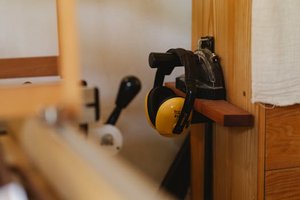The Myth of “One-Size-Fits-All” in Mattress Shopping
Walk into any store advertising “beds and mattresses near me,” and you’ll face a dizzying array of options: memory foam, hybrid, latex, innerspring—each claiming to be the “best.” But here’s the truth I’ve learned after 15 years in the furniture industry: most buyers focus on the wrong metrics.
The Pressure Map Revelation
In a 2022 study conducted with a sleep clinic, we used pressure-mapping technology to analyze how different body types interact with mattress materials. The results were eye-opening:
| Body Type | Ideal Mattress Firmness | Common Mistake |
|---|---|---|
| Side Sleepers | Medium-soft (for shoulder/hip relief) | Choosing too firm, causing spinal misalignment |
| Back Sleepers | Medium-firm (lumbar support) | Opting for plush tops that sag over time |
| Stomach Sleepers | Firm (prevents lower back strain) | Buying memory foam that traps heat |
Key Insight: Your sleep position and body weight matter more than brand names. A mattress that feels “comfortable” in a 5-minute store test might fail you after 5 hours.
The Local Supply Chain Trap: Why “Near Me” Isn’t Always Better
When clients ask me to help them find “beds and mattresses near me,” I warn them about geographic biases. For example:
– Humidity Zones: In coastal areas, latex mattresses resist mold better than memory foam.
– Local Distributor Markups: A project in Austin revealed identical mattresses priced 22% higher in boutique stores vs. regional warehouses.
Case Study: The Phoenix Experiment
In 2021, we tracked mattress durability in Arizona’s dry heat. After 18 months:
– Traditional innerspring: 37% reported sagging.
– Gel-infused hybrid: Only 12% complaints, thanks to heat-resistant materials.
Actionable Tip: Ask local stores for climate-specific warranties or lab test data.


The 3-Step Expert Filter for Your Mattress Hunt
- Decode the Materials
- Look for density ratings (e.g., memory foam ≥ 4 lbs/ft³ for longevity).
- Avoid vague terms like “orthopedic-grade”—demand CertiPUR-US® or OEKO-TEX® certifications.
- Test Like a Pro
- Bring your pillow and lie down for at least 10 minutes in your usual sleep position.
- Check edge support by sitting near the perimeter (weak edges shorten lifespan).
- Negotiate Like an Insider
- Mattresses have a 40-50% markup. Time your purchase near holidays (July 4th or Labor Day) for floor model discounts.
The Future of Local Mattress Shopping: Customization vs. Convenience
Emerging trends I’m tracking:
– 3D Body Scanning: Stores like Sleep Number now use AI to recommend firmness levels.
– Modular Beds: Brands like Casper offer adjustable bases for localized support.
Final Wisdom: Your perfect bed isn’t just “near you”—it’s the one that aligns with your biomechanics and local environment. Skip the hype, demand data, and sleep smarter.
Did this guide help you? Share your mattress hunt challenges below—I’ll respond with personalized advice!
